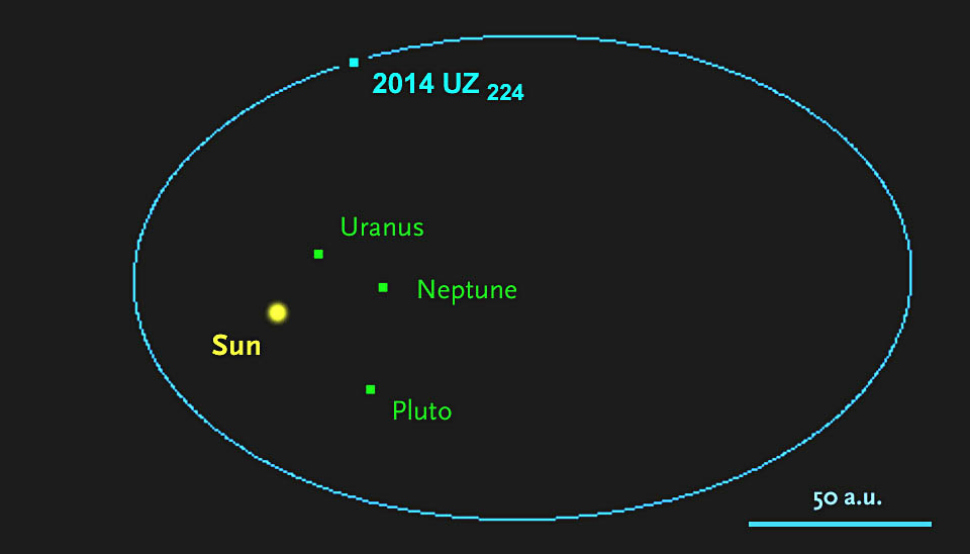John Tolley, October 17, 2016
Say hello to Earth?s long lost sibling, 2014 UZ224. Just keep in mind there won?t be any family get-togethers, at least not anytime soon.
The newly discovered dwarf planet, which comes in at a svelte 330 miles across, is about 8.5 billion miles from the sun. Comparatively speaking, the Earth is practically a hop away at a mere 92.96 million miles. For 2014 UZ224, a trip around the sun is equal to over 1,100 of ours.
Needless to say, discovering this tiny celestial object at such a distance was no easy task.
David Gerdes, a professor of physics and astronomy at the University of Michigan, helped to develop the Dark Energy Camera, a state of the art device being used to map of faraway galaxies by way of stunningly detailed images of the night?s sky.
Those same images can be just as useful, however, in identifying movement in the cosmos. And that?s just what Gerdes and a team of graduate students set about doing.
It works like this: If you take a photo of space over the course of several nights, the backdrop- the galaxies and far-off stars- remains stationary, but comets, asteroids, and planetoids will be on the move. From there astronomers can roughly determine things like the orbit and possible size of the celestial body.
But for Gerdes? team, the work wasn?t so cut and dry.
For starters, the team didn?t have nightly images of the same section of space. Instead, they had to rely on photos spanning several weeks. They turned to a process known as ?difference imaging?, basically subtracting one image from another and seeing what has changed. According to the team?s website, this required no small amount of computing. Thankfully the team had thousands of Fermilab computers crunching terabytes of data around the clock.
After the difference imaging, the team was left with millions of moving, or transient, objects to sift through. To aid them in this herculean task, they developed their own computer program to help ?connect the dots,? a process that took months.

Now that 2014 UZ224 has been verifiably observed, more detailed observation of the object is underway. Powerful telescopes will help researchers from the University of Michigan, the University of Pennsylvania, and Fermilab get a bigger picture of the planet, literally.
A paper on the discovery is forthcoming in November, but don?t expect Gerdes to stop scanning the sky. With the massive (and as yet purely theoretical) Planet 9 possibly lurking in the outskirts of our solar system, this may just be a prelude of great things to come.







